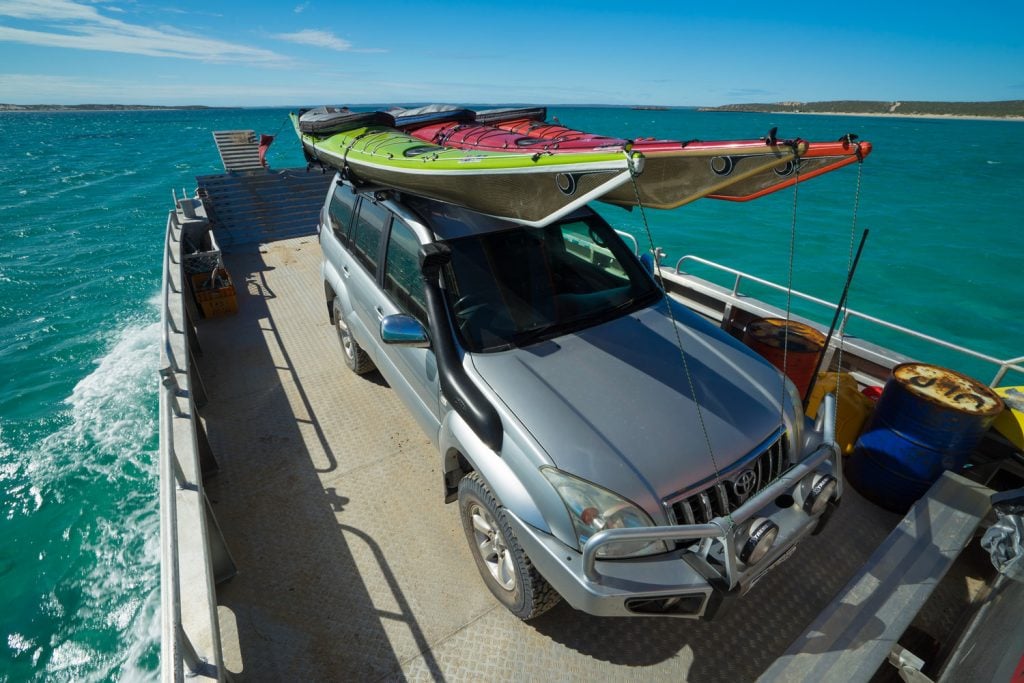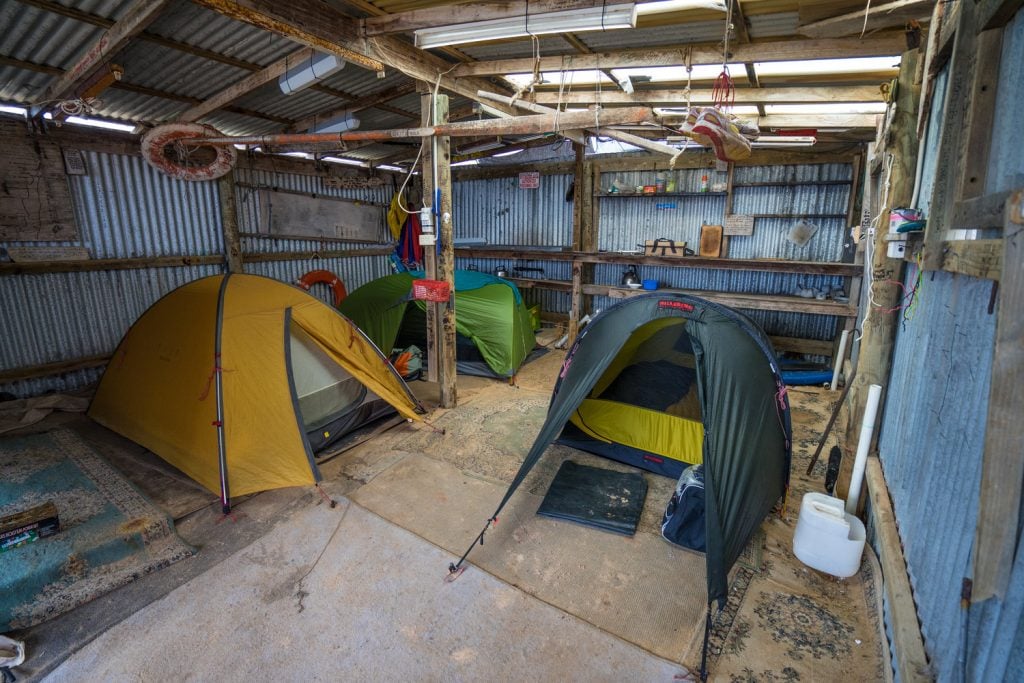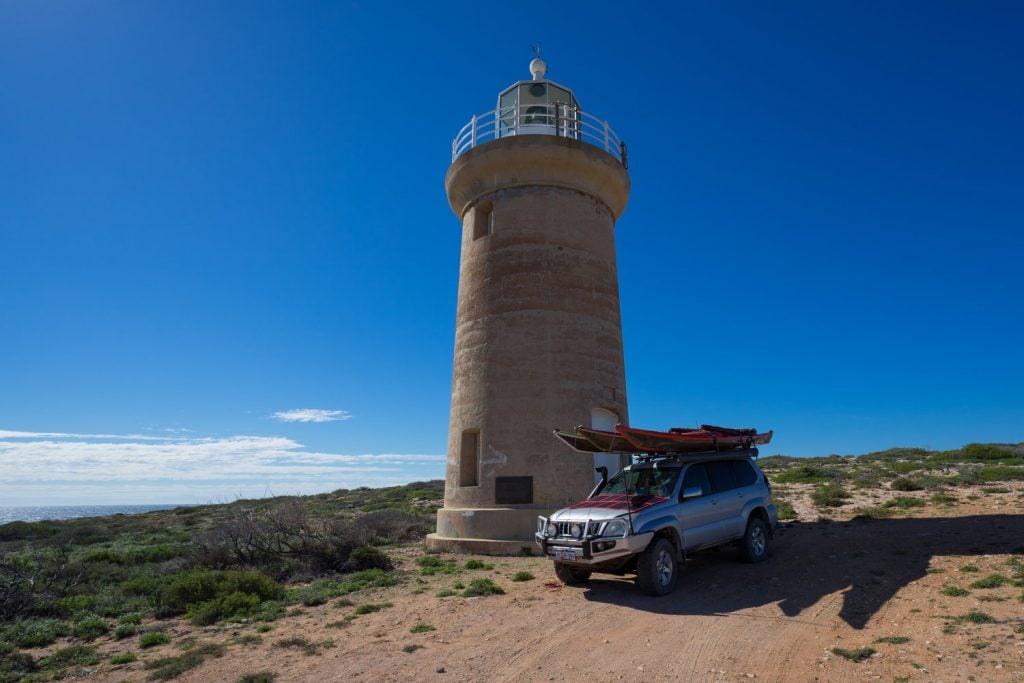The twin outboards revved loudly before the bow of the ferry slid free of the mainland. We backed into deeper waters before arcing northward and fixing our bearing in on Dirk Hartog Island.

The ferry sped across crystal blue waters before reaching the island. The engines again laboured, this time keeping the ferry hard up against the shore. The ramps were lowered and we reversed down and out on to the beach. Moments later the ferry had vanished, off to pick up the next vehicle. The remoteness of the location triggered a quick mental run through – 180 litres of diesel, 180 litres of water, food, satellite phone – all check.
Dirk Hartog Island is no small place. In fact, at 62,000 hectares it is Western Australia’s largest island. The west coast is rugged. Lined with cliffs, blow holes, reefs and rock – it is spectacular to explore!

Our camp at Urchin Point had uninterrupted views of the west coast. Whales majestically glided by on their northern migration, and each day the soft light of the rising and setting sun took the beauty of this location to the next level.



With no western access for our sea kayaks, we found a rocky northern bay to launch from. After scrambling down the steep slope to the water, we floated our craft and pushed away from the shore. Carefully we negotiated the sharp reefs, eager to keep our composite kayaks intact. Finding deeper water, we headed west. We paddled across the bay to Cape Inscription and then further on down the coast. Having the luxury of time, we paused along the way to soak up the view of the lighthouse and cliffs, the same sights we had previously looked out from. It was wonderful to experience this stunning place from such different perspectives.


This same coast is a fisherman’s paradise. Record catches are penned on the walls of a long standing shelter, along with the victor and era. Empty helium cylinders lie as a sign of those using balloons to achieve a seriously long cast. The cliff top mounted life buoys, and the washed up remains of a commercial fishing vessel, serve as a reminder of the power of the ocean in these parts.

The eastern coast is protected and lined with sandy beaches and protected bays. There are more camping areas, some with places to launch and moor boats. There are sanctuary zones and plenty of places to fish.

On a morning paddle around Quoin Bluff South we saw reef sharks and turtles. The waters on this side are shallow and sandy bottomed causing vibrant turquoise blue waters. Cruising across these waters silently was a magical experience.


The dunes near Mystery Beach and Tetradon Loop are pristine. The wind covers vehicle tracks with fresh sand, like a layer of fresh powder snow. Using the GPS as an aid you guess the line and roll a new track in the sand. As you start to lose navigational confidence a marker or section of track appears to guide you along the way. With so few visitors this is a place you can discover for yourself.

As we explored the dunes we came across a mountain towering in to the dark blue sky above. Leaving our 4WD behind we claw our bare feet into the steep sands and climbed. Breathless we reached the top, and looked up. Crystal blue waters as far as the eye can see, rolling dunes, not a person in sight – what a place!

From the 1860s until 2009 Dirk Hartog Island was a pastoral property, used mainly to run sheep. In 2009 the majority of the island was turned into a National Park. The original family have retained the land around the homestead and operate an Eco Lodge, some additional camping and the vehicle ferry.

The WA Department of Parks and Wildlife are now the caretakers for the rest of the island. They are undertaking an ambitious conservation program named ‘Return to 1616’. The sheep have been removed and the goats and feral cats are being eradicated. Once the feral species have been confirmed as completely removed, they will reintroduce 10 native species originally from the area. The successful completion of this project combined with the existing marine sanctuaries will enhance the natural value of this place, a part of the Shark Bay World Heritage Area.

With a grand total of 8 single group camping areas spread across the National Park, you certainly can’t complain about being stacked in. With restrictions on numbers visiting the island, it is best to book your visit in advance. Camping in the National Park is remote and fantastic. With no facilities it’s a place for the prepared. It can be windy so a sturdy setup is a good choice and sand pegs or sand screws are invaluable. You will need plenty of water and toilets are DIY. There is usually plenty of sunshine so solar is an effective option for power generation. There are only a couple of pockets with mobile reception, so a satellite phone is worth considering for emergencies.


Dirk Hartog Island is a place for well-prepared vehicles. The roads can be both corrugated and sharp. Quality tyres and suspension are a wise choice. Being a remote island, vehicle repairs would be difficult – it’s worth double checking that your 4WD is “remote ready”. From the last fuel at Overlander Roadhouse to the ferry beach at Steep Point, it’s a 370km return trip. On top of this, you will want plenty of fuel to explore all that this island has to offer!
Turquoise waters, white beaches, rugged cliffs, soaring dunes. Whales, turtles, reef sharks, dolphins. Fish, kayak, snorkel, 4x4, boating. Camp, beach, relax, walk. Quiet, remote, wild. Dirk Hartog Island is an island paradise. With so much to do, there is something for everyone. We doubt one trip will scratch the surface.

